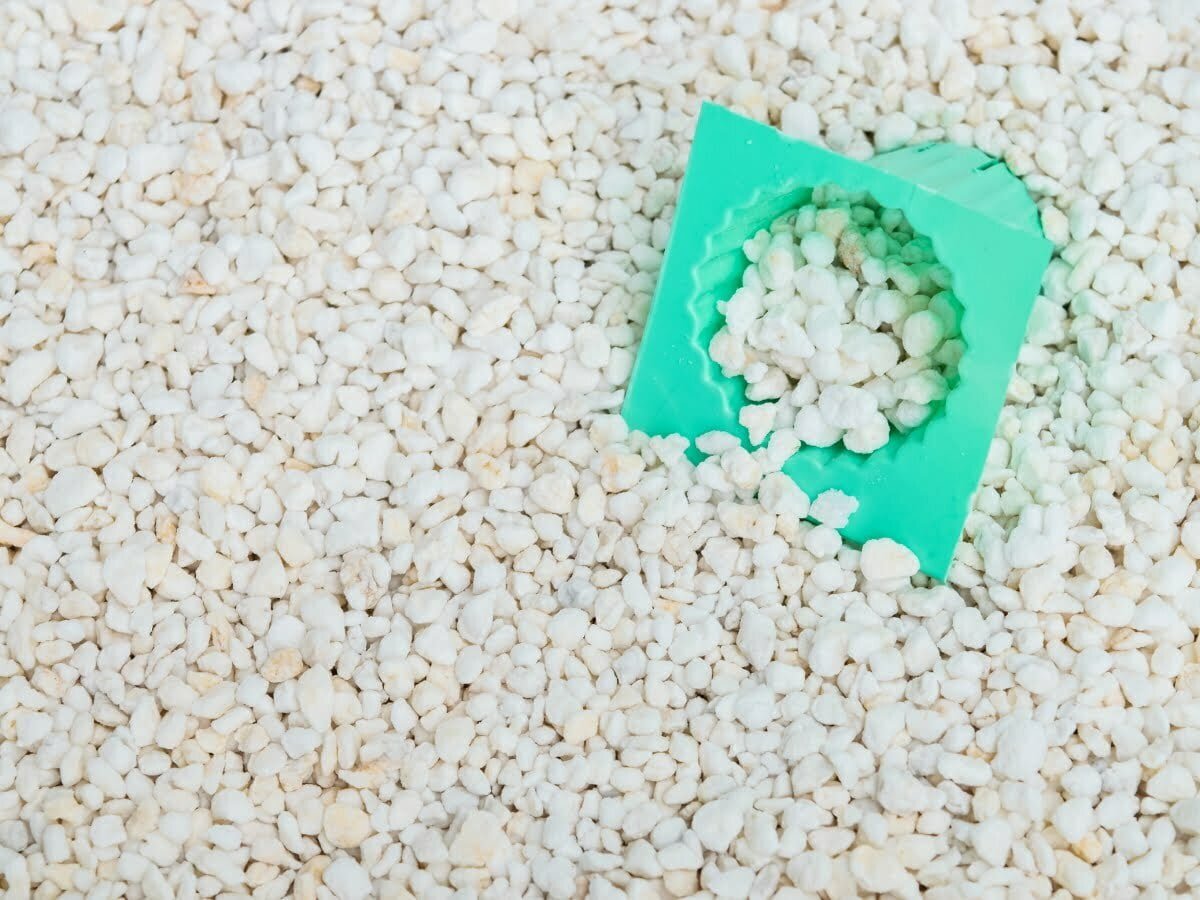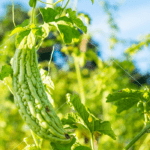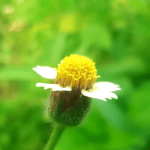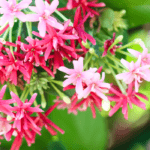Introduction to Perlite
What is Perlite and how is it made?
Perlite is a naturally occurring volcanic glass that is formed by the rapid cooling of lava. It is mined and processed to form small, lightweight, white granules that are used in a variety of applications. The granules are formed by heating the raw material to about 900°C, which causes the water trapped in the rock to turn into steam and expand, creating small pockets of air within the material. This makes perlite an excellent insulator with low thermal conductivity.
Perlite: A Comprehensive Study of its Role in Plant Growth
Why is Perlite beneficial for plants and gardening?
Perlite is a popular choice for gardeners and horticulturists because of its many benefits. It is lightweight, sterile, and pH-neutral, which makes it an excellent growing medium for plants. Perlite can be used to improve soil aeration and drainage, which promotes root growth and prevents waterlogged soil. It also helps to retain moisture in the soil, reducing the frequency of watering needed. Perlite is an environmentally friendly and sustainable option, as it is a natural mineral that can be recycled and reused.
Historical uses of Perlite for Soil in Agriculture and Horticulture
Perlite has been used in agriculture and horticulture for over a century. It was first used as a soil amendment in France in the 19th century, where it was found to improve soil structure and drainage. In the United States, perlite was first used in the 1940s as a soil amendment, and it quickly became a popular choice for commercial growers. Today, perlite is used in a wide range of horticultural applications, including hydroponics, seed starting, and container gardening.
Perlite in Gardening
Benefits of using Perlite in gardening
Perlite is an excellent choice for gardeners who want to improve soil quality and drainage. Its porous structure allows air and water to move freely through the soil, which promotes healthy root growth and prevents waterlogged soil. Perlite is also a sterile medium, which means it does not contain any pathogens or weed seeds that could harm your plants. This makes it a great choice for starting seeds, as well as for growing plants in containers.
How Perlite improves soil quality and drainage
Perlite is a lightweight material that can be added to soil to improve its structure and drainage. When added to heavy clay soils, it helps to break up the clay particles and improve aeration. When mixed with sandy soils, it helps to increase water retention and prevent the soil from drying out too quickly. Perlite can be added to soil in a variety of ways, including as a top dressing or mixed into the soil itself.
How to mix Perlite with soil for container gardening
Perlite is an excellent choice for container gardening, as it helps to improve soil quality and drainage. To mix perlite with soil for container gardening, start by filling your container with a high-quality potting soil. Add perlite to the soil in a ratio of 1:1, or up to 30% perlite to 70% soil. Mix the soil and perlite together well, and then use the mixture to fill your container. Plant your seeds or seedlings as you normally would, and water your container regularly. The perlite will help to improve soil drainage and prevent waterlogged soil, which can lead to root rot.
Perlite is a versatile and sustainable mineral that offers many benefits for gardeners and horticulturists. Its lightweight and porous structure make it an excellent choice for improving soil quality and drainage, and its pH-neutral and sterile properties make it safe for use with a wide range of plants. With proper use and care, perlite can help you to grow healthy and vibrant plants in your garden or greenhouse.
Perlite in Hydroponics
Hydroponics is a popular method of growing plants that uses a nutrient-rich solution instead of soil. Perlite is an excellent addition to hydroponic systems for several reasons.
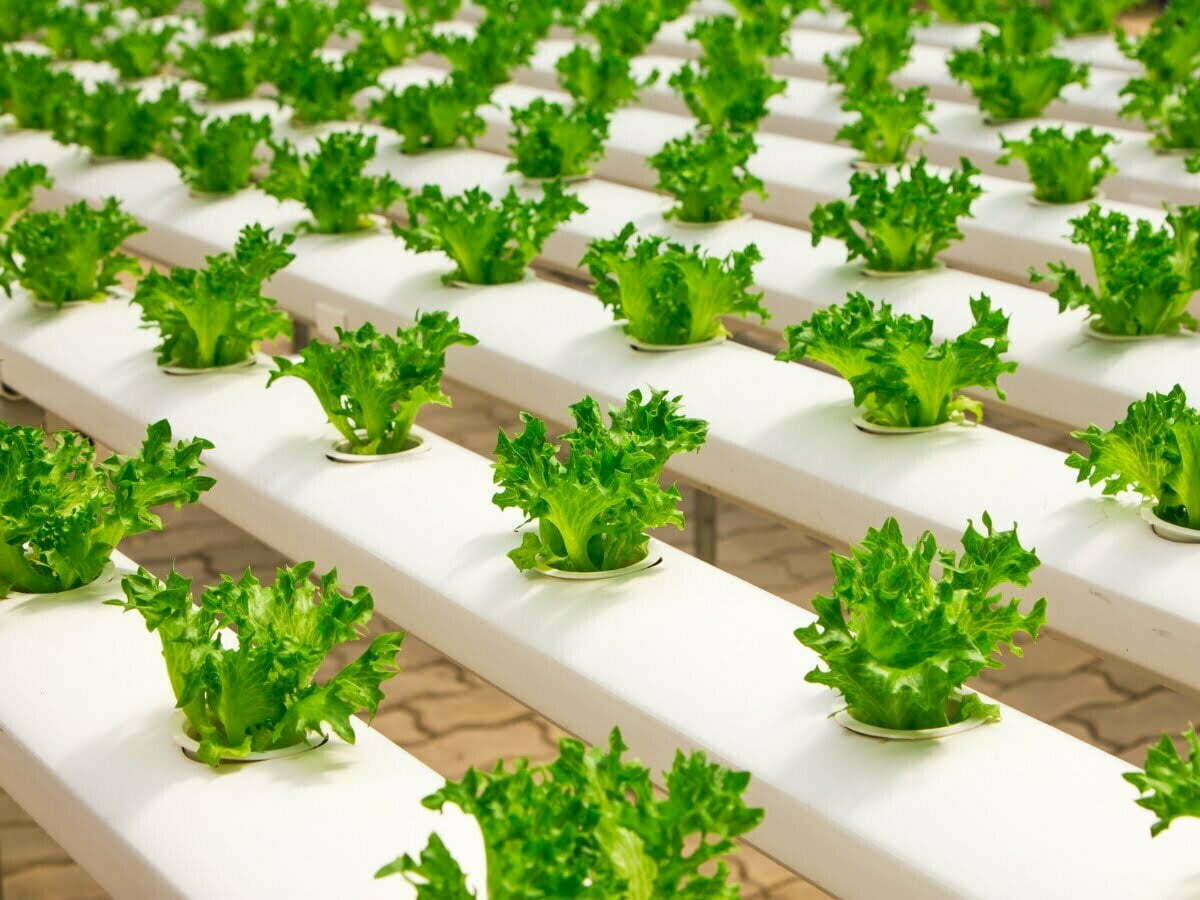
perlite for hydroponics
Benefits of using Perlite in hydroponic systems:
Perlite is an excellent medium for hydroponic systems for many reasons. Firstly, it is lightweight and porous, which makes it an ideal medium for plants to grow in. Secondly, it is pH-neutral, which means it won’t affect the pH level of the nutrient solution. Lastly, Perlite is sterile, which reduces the risk of plant diseases.
How Perlite helps to aerate the root zone and provide oxygen to the plants:
Perlite is a highly porous material, which allows for excellent aeration in the root zone. When used in hydroponic systems, it allows for proper drainage and prevents water from accumulating, which can lead to root rot. Additionally, Perlite provides oxygen to the roots, which is vital for plant growth.
How to use Perlite in hydroponic systems:
When using Perlite in hydroponic systems, it is best to mix it with other media such as vermiculite, coconut coir, or peat moss. The ratio of Perlite to other media should be around 50/50. To use, add the mixture to your hydroponic system and plant your seedlings.
Perlite as a Seed Starter
Perlite is also an excellent medium for starting seeds. It is lightweight and sterile, which makes it a great alternative to soil.

Benefits of using Perlite as a seed starter:
Perlite is an excellent medium for starting seeds for several reasons. Firstly, it is sterile, which reduces the risk of plant diseases. Secondly, it is highly porous, which allows for excellent aeration in the root zone. Lastly, Perlite does not compact over time, which means that the roots can easily penetrate the medium, promoting healthy growth.
How Perlite promotes healthy seed germination and growth:
Perlite promotes healthy seed germination and growth by providing excellent aeration in the root zone. This allows for proper drainage and prevents water from accumulating, which can lead to root rot. Additionally, the porous nature of Perlite allows for proper oxygenation, which is vital for seed germination and growth.
How to use Perlite as a seed starter:
To use Perlite as a seed starter, fill a container with Perlite and water until it is moist. Plant your seeds in the Perlite and place the container in a warm, sunny spot. Ensure that the Perlite stays moist but not waterlogged. As your seeds start to germinate, you can transplant them into soil or other growing media.
Perlite is a versatile medium that has many uses in gardening, horticulture, and hydroponics. It is lightweight, pH-neutral, and sterile, making it an excellent addition to any growing system. Whether you’re starting seeds or growing plants hydroponically, Perlite can help promote healthy growth and yields.
Perlite for Indoor Plants
At present, more and more people are investing in indoor plants for a variety of reasons, including decoration and health benefits. However, the success of growing indoor plants largely depends on the quality of the soil and growing medium used. This is where Perlite comes in handy.
Perlite is a popular soil amendment used by gardeners, horticulturists, and hydroponic growers to improve soil quality and plant growth. It is a lightweight, volcanic mineral that is heated and expanded to form small, white, porous particles. Perlite is an excellent choice for indoor plant growers due to its many benefits.
Benefits of using Perlite for indoor plants:
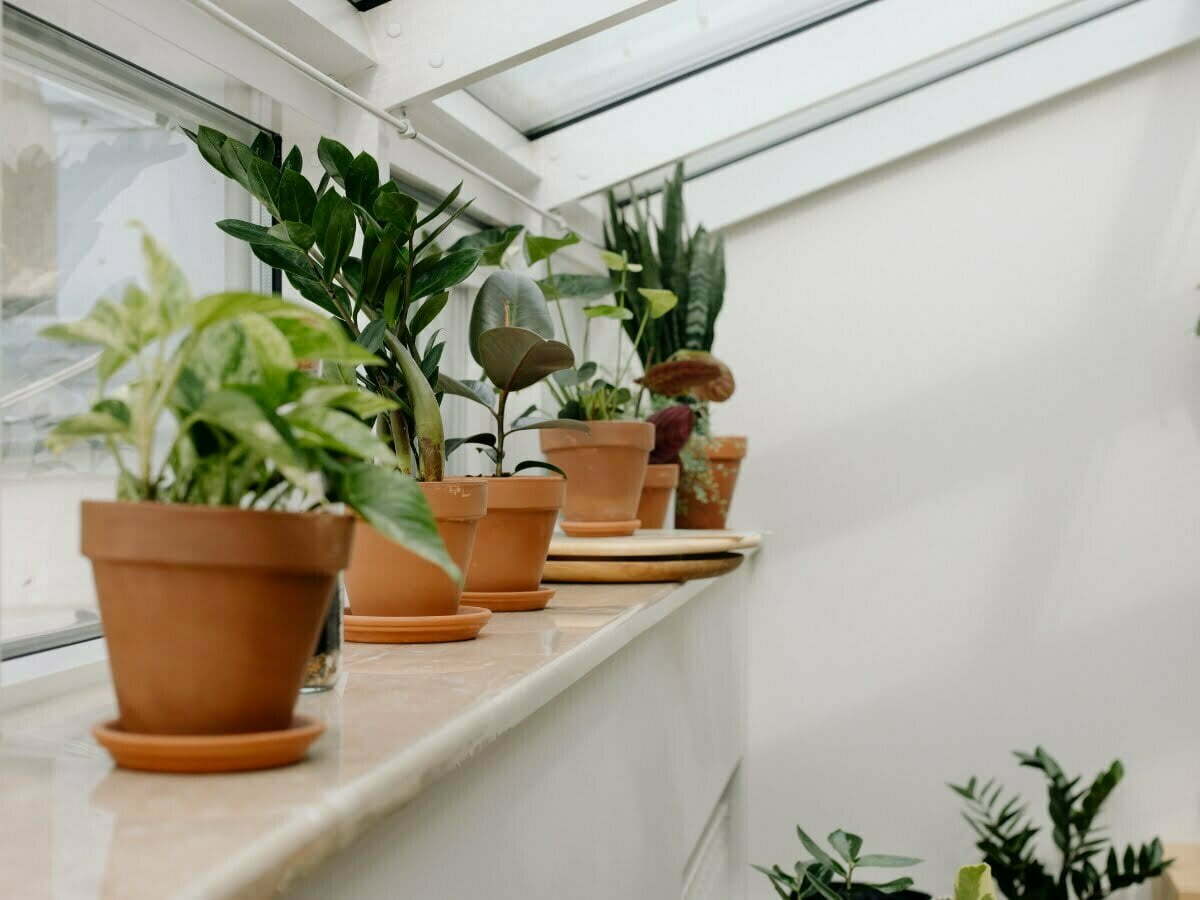
Improves drainage:
Perlite has excellent drainage properties that allow excess water to drain out of the soil, which prevents waterlogged roots and plant stress. It keeps the soil moist but not waterlogged, which is important for healthy root growth.
Aerates the soil:
Perlite particles create small pockets of air in the soil, which provides oxygen to the roots and prevents soil compaction. This helps the plant roots to grow better and faster.
Provides nutrients:
Perlite is a source of silica, which is essential for plant growth. It also contains some minerals like iron, magnesium, and potassium, which are vital for plant growth.
Prevents soil diseases:
Perlite is sterile and free of pathogens, which helps prevent soil-borne diseases that can harm indoor plants. It also helps to keep the soil pH neutral, which is beneficial for plant growth.
How Perlite helps to improve indoor air quality:
Indoor plants have been shown to improve indoor air quality by reducing pollutants and increasing oxygen levels. However, the soil used to grow indoor plants can be a source of volatile organic compounds (VOCs) that can be harmful to human health. Perlite helps to mitigate this problem in several ways:
- Perlite is a natural material that does not contain any harmful chemicals or pollutants.
- Perlite helps to aerate the soil, which improves soil health and reduces the buildup of harmful VOCs.
- Perlite has a high surface area, which helps to absorb and neutralize harmful gases and chemicals in the soil.
How to use Perlite for indoor plants:
Perlite can be used as a standalone growing medium or as an amendment to soil mixes. When using Perlite as a standalone medium, it is essential to mix it with other nutrients and minerals to provide all the necessary nutrients for the plant’s growth.
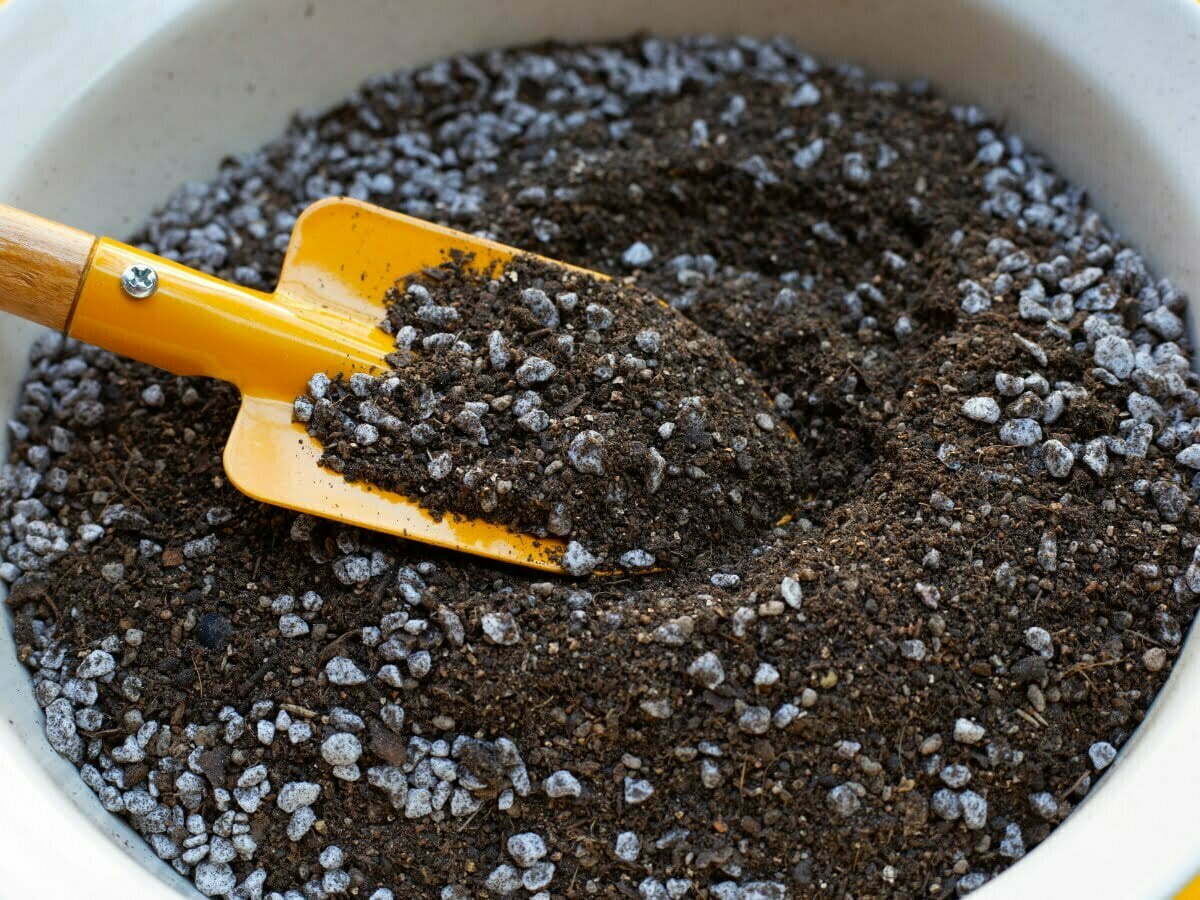
For a soil mix, it is recommended to use 1 part Perlite and 2 parts potting soil or compost. Mix thoroughly before planting. For hydroponic growing, Perlite can be used as a growing medium on its own or mixed with other materials such as coconut coir or vermiculite.
Perlite for Outdoor Plants
Perlite is not only beneficial for indoor plants but also for outdoor plants. It is a versatile and effective soil amendment that can improve soil structure and promote healthy plant growth. Here are the benefits of using Perlite for outdoor plants:
Benefits of using Perlite for outdoor plants:
Improves soil structure:
Perlite helps to create a porous soil structure that allows water, air, and nutrients to penetrate the soil more easily. This helps to improve soil fertility and plant growth.
Reduces soil compaction:
Soil compaction is a common problem in outdoor gardens, especially in areas with heavy foot traffic or heavy machinery use. Perlite helps to reduce soil compaction by providing aeration to the soil.
Promotes healthy root growth:
Perlite provides a good balance of air and water to the soil, which is essential for healthy root growth. Healthy roots lead to healthy plants.
How Perlite helps to improve soil structure and reduce compaction:
Perlite is a naturally occurring volcanic glass that is formed when lava cools rapidly. It has a unique internal structure that makes it an ideal material for use in soil amendments. Perlite is lightweight and porous, which means that it can be easily mixed into soil to improve its structure and reduce compaction.
Soil compaction occurs when the soil particles are packed tightly together, making it difficult for water, air, and nutrients to move through the soil. This can lead to poor plant growth and even plant death. Perlite helps to prevent soil compaction by creating air pockets in the soil. These air pockets allow for better water drainage and more efficient absorption of nutrients.
Perlite also helps to improve soil structure by creating a more porous soil. Porous soil is important for plant growth because it allows water and air to penetrate the soil more easily. This helps to prevent water-logging of the soil and ensures that plant roots have access to the nutrients they need. Perlite can be mixed with soil in a ratio of 1:4 or 1:5 to improve its structure.
In addition to improving soil structure and reducing compaction, perlite also helps to retain moisture in the soil. This is important in areas where water is scarce or during dry periods. Perlite can absorb up to four times its weight in water, and it releases the water slowly back into the soil, providing a steady supply of moisture to the plant roots.
How to use Perlite for outdoor plants:
To use perlite for outdoor plants, you can mix it into the soil before planting. A general rule of thumb is to mix one part perlite with four parts soil. You can also use perlite as a top dressing by spreading it evenly over the surface of the soil.
When planting in containers, you can add perlite to the potting mix. Mix one part perlite with three parts potting soil for best results. Perlite can also be used as a drainage layer at the bottom of the container to prevent water-logging.
Perlite is an excellent soil amendment that can help to improve soil structure, reduce compaction, and promote healthy root growth in outdoor plants. By using perlite, you can ensure that your plants have access to the nutrients they need and that they grow strong and healthy.
Perlite for Lawns
A lush green lawn is a dream for every homeowner, and proper soil preparation is the key to achieving it. Perlite is a versatile mineral that can help you achieve a healthy and vibrant lawn. Here are the benefits of using Perlite for lawns, how it improves soil aeration and water retention, and how to use Perlite for lawns.
Benefits of using Perlite for lawns:
Improved soil aeration:
Soil aeration is vital for healthy grass growth. Perlite helps to create air pockets in the soil, allowing the roots to breathe and absorb nutrients. This leads to healthier, greener grass.
Enhanced water retention:
Perlite is a porous mineral that can absorb water and slowly release it into the soil. This means that your lawn will remain hydrated for longer, even during dry spells.
Reduced soil compaction:
Heavy foot traffic and machinery can compact the soil, making it difficult for the grass roots to grow. Perlite helps to reduce soil compaction, creating a looser soil structure that promotes healthy root growth.
How Perlite helps to improve soil aeration and water retention:
Perlite is a lightweight, porous mineral that can hold up to 4 times its weight in water. When added to soil, it creates air pockets that allow oxygen to penetrate the soil, promoting healthy root growth. This means that your grass will be able to absorb nutrients and water more efficiently, leading to a healthier lawn.
How to use Perlite for lawns:

Soil amendment:
Mix Perlite into the soil to improve aeration, water retention, and drainage. For best results, mix one part Perlite with three parts soil.
Topdressing:
Spread a layer of Perlite over the top of the soil to improve water retention and aeration. For best results, use a ratio of one part Perlite to ten parts soil.
Seeding:
Mix Perlite into the soil before seeding to improve soil aeration and water retention. For best results, use a ratio of one part Perlite to three parts soil.
Perlite for Composting
Composting is an eco-friendly way to reduce waste and create nutrient-rich soil for your garden. Perlite can help speed up the composting process and reduce odors. Here are the benefits of using Perlite for composting, how it helps to speed up the composting process and reduce odors, and how to use Perlite for composting.
Benefits of using Perlite for composting:
Improved aeration:
Composting requires oxygen to break down organic matter. Perlite helps to create air pockets in the compost, allowing oxygen to penetrate and speed up the composting process.
Enhanced water retention:
Perlite is a porous mineral that can absorb water and slowly release it into the compost. This means that the compost will remain hydrated for longer, promoting healthy microbial growth.
Reduced odors:
Composting can produce unpleasant odors as organic matter breaks down. Perlite helps to absorb and neutralize these odors, making composting more pleasant.
How Perlite helps to speed up the composting process and reduce odors:
Perlite is a lightweight, porous mineral that creates air pockets in the compost, promoting oxygen flow and speeding up the composting process. It also absorbs excess moisture, preventing the compost from becoming too wet and reducing unpleasant odors.
How to use Perlite for composting:
Mix Perlite into the compost:
Mix Perlite into the compost to improve aeration and water retention. Use a ratio of one part Perlite to ten parts compost.
Use as a top layer:
Spread a layer of Perlite over the top of the compost to help reduce odors and improve air circulation. This is especially useful for indoor composting systems.
Some Important Points to Remember while Using Perlite
Add Perlite to problem areas:
If you have areas in your compost that are slow to break down or have a foul smell, add Perlite directly to those areas. This will help to speed up the composting process and reduce odors.
Use Perlite with other amendments:
Perlite can be used in conjunction with other compost amendments such as vermiculite, peat moss, and coconut coir. Each amendment has its own unique benefits, and using them together can create a balanced and nutrient-rich compost.
Consider the particle size:
Perlite comes in different particle sizes, so it’s important to consider which size is best for your composting needs. Fine perlite is best for indoor composting systems, while larger particles may be better for outdoor composting.
Store Perlite properly:
Perlite is a lightweight material that can be easily blown away by wind. To prevent loss, store your Perlite in a covered container or bag. Keep it in a cool, dry place to prevent moisture buildup.
Perlite is a versatile and effective amendment for composting. It can help to speed up the composting process, reduce odors, and improve overall compost quality. When using Perlite for composting, remember to mix it into the compost, use it as a top layer, add it to problem areas, use it with other amendments, consider particle size, and store it properly. By following these tips, you can create nutrient-rich compost that will help your plants thrive.
FAQs related to Perlite
What is perlite used for in gardening?
Perlite is commonly used in gardening as a soil amendment to improve soil drainage and aeration. It also helps retain moisture and nutrients, making it an ideal addition for container gardening and seed starting.
What are the disadvantages of perlite?
One of the main disadvantages of perlite is that it can easily blow away in windy conditions. It also has a tendency to float to the surface of the soil, which can make it difficult to mix evenly. Additionally, perlite can be dusty and irritating to the skin and respiratory system if inhaled.
Can perlite be used for all plants?
Perlite is generally safe to use for all types of plants, but it is particularly useful for plants that prefer well-draining soil. Succulents, cacti, and other plants that are prone to root rot benefit from the improved drainage that perlite provides.
What is perlite made from?
Perlite is a type of volcanic glass that is formed when lava cools rapidly. It is mined from deposits of volcanic ash and then heated to high temperatures, causing it to expand and become porous.
How much perlite do I add to soil?
The amount of perlite you should add to soil depends on the soil type and the plants you are growing. As a general rule, a ratio of 1 part perlite to 3 parts soil is a good starting point. You can adjust the ratio up or down as needed to achieve the desired soil texture and drainage.
What are the best uses for perlite?
Perlite is versatile and can be used in a variety of gardening applications, including potting soil, seed starting mixes, and as a top dressing to improve soil drainage and prevent compaction.
Is perlite plant fertilizer?
No, perlite is not a fertilizer. It is a soil amendment that improves soil drainage and aeration.
What can I use instead of perlite?
Lava rocks, sized between 6mm to 25mm (or 1/2 to 1 inch), can be used as an alternative to perlite. They are also porous, which improves soil drainage and aeration, but are heavier and less likely to blow away in windy conditions.
How long does perlite last?
Perlite does not decompose or break down over time, so it can last indefinitely in the soil. However, it may become compacted or dusty over time, which can reduce its effectiveness as a soil amendment.
Does perlite absorb water?
Perlite does not absorb water like a sponge. Instead, it helps to retain moisture in the soil by creating small air pockets that hold water and nutrients for plant roots to absorb.
What are the advantages and disadvantages of perlite?
The advantages of perlite include improved soil drainage and aeration, increased moisture retention, and ease of use. The disadvantages include its tendency to blow away and float to the surface of the soil, as well as its potential to be dusty and irritating.
Can you grow cuttings in perlite?
Yes, perlite is a popular medium for rooting cuttings. It provides good drainage and aeration, which helps to prevent root rot and promotes healthy root growth.
Do house plants like perlite?
Many house plants benefit from the improved drainage and aeration that perlite provides. However, some plants, such as ferns, prefer a more moisture-retentive soil mix and may not require perlite.
Does potting soil have perlite?
Potting soil may or may not contain perlite, depending on the brand and type of mix. However, perlite is a common ingredient in many commercial potting soil mixes because of its beneficial properties and its light weight.
Does perlite prevent fungus?
Perlite doesn’t prevent fungus, but it can improve drainage and aeration, which can reduce the likelihood of fungal growth.
Does potting soil have perlite?
Potting soil can contain perlite as one of the ingredients, depending on the brand and type of soil.
Is perlite a health risk?
Perlite is generally considered safe to handle and use in gardening, but it is important to use proper safety measures such as wearing a mask to avoid inhaling dust particles.
Is perlite acidic or alkaline?
Perlite is pH neutral, meaning it has neither acidic nor alkaline properties.
Does perlite dissolve?
Perlite does not dissolve in water or other liquids.
What chemical is perlite?
Perlite is a volcanic glass that contains water. Its chemical composition consists primarily of silicon, aluminum, and oxygen.
What is organic perlite?
Perlite is a naturally occurring mineral and is therefore considered organic in gardening.
How much water is in perlite?
Perlite can hold up to four times its weight in water, but excess water should be drained to prevent root rot.
Does perlite dry out soil?
Perlite can help improve drainage and aeration, but it does not dry out soil. Instead, it allows excess water to drain away, preventing waterlogged soil that can lead to root rot.
Where is perlite found?
Perlite is found all over the world, but the largest deposits are located in the United States, Greece, and Turkey.
Is perlite better than sand?
Both perlite and sand have their own unique properties and uses. Perlite is a lightweight growing medium that retains water well and improves aeration, making it a superior option for commercial purposes. On the other hand, sand can come in different grades, including fine and coarse, and has a variety of uses depending on the grade. Therefore, the choice between the two depends on the specific needs and purposes of the user. It’s important to consider the properties and benefits of each option before making a decision.
How strong is perlite?
Perlite is a relatively weak material, and its strength is determined by its particle size and how tightly it is packed.
Which company perlite is best?
Shehri Kisaan is a reputable Indian company that produces high-quality perlite for gardening and horticultural use.
Is perlite a nitrogen?
Perlite does not contain any significant amounts of nitrogen, it is primarily used for its water retention and aeration properties.
Does perlite raise soil pH?
Perlite is pH neutral and does not raise or lower the pH of soil.
Can I use pebbles instead of perlite?
Pebbles can be used in place of perlite for drainage, but they do not provide the same aeration benefits.
What is perlite also known as?
Perlite is also known as volcanic glass or obsidian.
Is rice husk good for plants?
Rice husks can be used as a soil amendment for plants, as they provide some nutrients and help improve soil structure.
What are the disadvantages of perlite as growing media?
The main disadvantage of perlite is that it can break down over time and lose its effectiveness as a growing medium.
What color is perlite?
Perlite is usually white or light gray in color.
Can roots rot in perlite?
Roots can rot in perlite if the excess water is not properly drained, leading to waterlogged soil conditions.
How do I identify perlite?
Perlite can be identified by its light and porous texture, which resembles small white beads or particles.
Does perlite expand when heated?
Perlite can expand up to 20 times its original volume when heated, making it useful in construction materials.
Does perlite stop overwatering?
Perlite can help prevent overwatering by improving drainage and reducing water retention in soil.
Does perlite provide oxygen?
Perlite can improve aeration in the soil by creating air pockets, which allows oxygen to reach the roots of plants. This can be particularly beneficial in poorly drained soils or soil mixes that can become compacted over time.
Does perlite shrink?
Perlite is a stable mineral and does not shrink over time, but it can settle slightly over time as soil particles move around it. However, this settling is typically not significant enough to affect plant growth or drainage.
How long does it take for perlite to dry?
The drying time for perlite depends on factors such as humidity, temperature, and the amount of water added. Generally, perlite will dry out within a few hours to a day or two after being watered, depending on these factors.
Is it bad to put too much perlite in soil?
While perlite can improve drainage and aeration, using too much can actually have a negative effect on plants. This is because perlite has a low water-holding capacity, so using too much can lead to soil drying out too quickly, causing stress to the plant.
What is the best soil for stem cuttings?
A well-draining soil mix is typically best for stem cuttings. A mix of peat moss, perlite, and vermiculite can be a good option, or you can use a commercial seed-starting mix.
Can you grow seeds in just perlite?
Perlite is not a suitable medium for growing seeds on its own, as it does not have enough nutrients to support the growth of seedlings. However, it can be used as a component in a seed-starting mix, combined with other materials such as peat moss and vermiculite.
How much water do I add to perlite propagation?
When propagating plants in perlite, it’s important to keep the perlite consistently moist but not waterlogged. The exact amount of water needed will depend on factors such as the size of the container and the environment. As a general rule, you should water the perlite enough to keep it consistently moist but not soaked.
Can I plant cuttings straight into soil?
It is possible to plant cuttings directly into soil, but it is usually recommended to propagate them first in a rooting medium such as perlite. This can increase the success rate of the cuttings and help prevent them from rotting or drying out.
Can you separate perlite from soil?
Perlite can be separated from soil by sifting the soil through a screen or strainer. This can be useful if you want to reuse the perlite or if you want to remove any debris or clumps from the soil.
What are the disadvantages of perlite?
While perlite can be beneficial for improving drainage and aeration, it also has some disadvantages. Perlite has a low water-holding capacity, which means that it can dry out quickly and may require more frequent watering. Additionally, perlite is a non-renewable resource, and the mining and processing of perlite can have environmental impacts.
How much perlite do I need for potted plants?
The amount of perlite needed for potted plants will depend on the size of the pot and the specific plant’s needs. As a general rule, a ratio of 1:1 perlite to potting mix can be a good starting point for most plants.
What is the purpose of perlite?
The purpose of perlite in gardening is to improve soil drainage, aeration, and water retention. Perlite can be added to soil mixes or used as a top layer to help reduce odors and improve appearance.
What is the best soil for a garden?
The best soil for a garden will depend on factors such as the specific plants being grown, the climate, and the type of soil already present
What Does Perlite Soil Do?
Perlite soil is a lightweight and porous material that is added to soil to improve its drainage, aeration, and water-holding capacity. Perlite particles are expanded volcanic glass that has been heated and “popped” like popcorn. When mixed into soil, perlite soil creates air pockets that allow for better oxygen flow to plant roots, preventing them from becoming waterlogged or suffocated.
How is Perlite Soil Made?
Perlite soil is made from naturally occurring volcanic glass. The glass is crushed and then heated to temperatures between 850-900°C (1562-1652°F) to make the particles expand and “pop.” The result is a lightweight, porous, and sterile material that can hold moisture and nutrients in the soil while allowing for proper drainage and aeration.
What is the best soil for a garden?
The best soil for a garden depends on the type of plants you want to grow, as different plants have different soil requirements. In general, a good garden soil is well-draining, nutrient-rich, and has a pH level that is suitable for the plants you want to grow. A mix of 50% topsoil, 30% compost, and 20% perlite or vermiculite is a great all-purpose soil mix for most garden plants. However, it’s always best to do research on the specific needs of your plants to ensure they are getting the optimal growing conditions.
Conclusion
In conclusion, Perlite is a versatile and beneficial material for gardeners, horticulturists, and hydroponics enthusiasts. Its lightweight and porous properties make it an ideal soil amendment that can improve soil structure, increase drainage, and enhance root growth.
Summary of benefits and uses of Perlite in gardening, hydroponics, seed starting, indoor and outdoor plants, lawns, and composting:
- Gardening: Perlite can be used in various gardening applications such as potting mixes, raised beds, and container gardening. It can improve soil aeration and drainage, which helps prevent root rot and other fungal diseases. Perlite can also provide insulation to plants during extreme weather conditions.
- Hydroponics: Perlite is commonly used as a growing medium in hydroponic systems. Its porous structure allows for excellent drainage and aeration, which is essential for healthy plant growth. Perlite is also pH neutral, which makes it ideal for hydroponic systems that require precise pH control.
- Seed starting: Perlite can be used as a seed starting medium as it provides excellent moisture retention and aeration. It helps prevent damping off and provides a suitable environment for seed germination and growth.
- Indoor and outdoor plants: Perlite can be used to improve the overall health and growth of indoor and outdoor plants. Its lightweight properties make it easy to mix with soil, and it can improve soil drainage and aeration. Perlite can also prevent soil compaction, which can be detrimental to plant growth.
- Lawns: Perlite can be used to improve soil conditions in lawns. Its aeration and drainage properties can help prevent soil compaction, which can hinder root growth and nutrient uptake. Perlite can also help retain moisture in the soil, which is essential for healthy grass growth.
- Composting: Perlite can be used in composting to help balance the carbon to nitrogen ratio. Its porous structure provides excellent aeration, which helps speed up the composting process.
Overall, Perlite is a cost-effective and sustainable solution for improving soil conditions and promoting healthy plant growth. Its benefits and uses in gardening, hydroponics, seed starting, indoor and outdoor plants, lawns, and composting make it an essential material for any gardening enthusiast.


